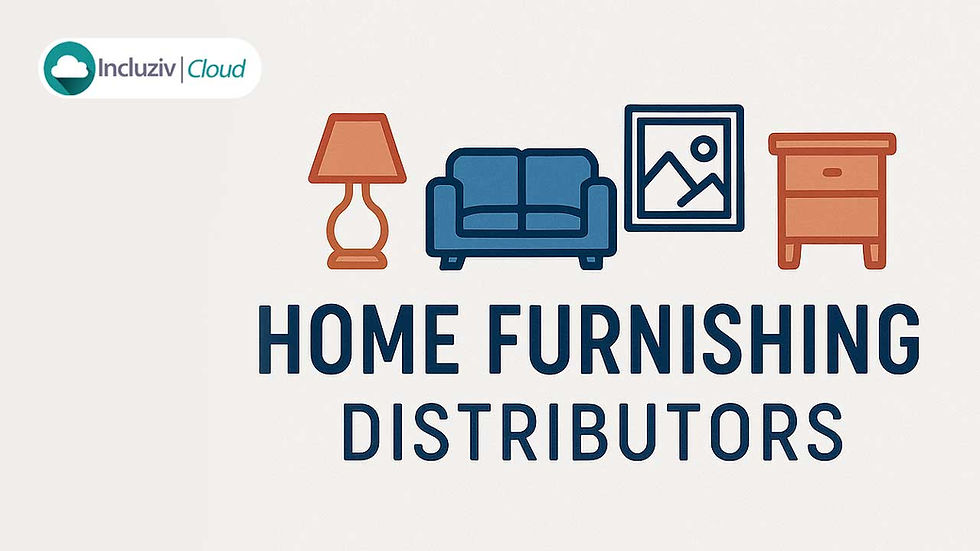Step-by-Step Guide to Inventory Cleaning and Barcoding: Why Indian Businesses Can’t Afford to Delay
- Aditi

- Aug 13
- 3 min read
1. Introduction – The Silent Creep of Inventory Chaos
When most Indian manufacturing and distribution businesses start, inventory tracking is usually an afterthought. In the early days, stock levels are low, products are fewer, and it’s easy to “just remember” where things are. Marking every item, assigning it a storage location, or creating proper stock records seems like overkill when orders are still manageable.
But over time, the business grows. Orders multiply. Stock starts coming from multiple vendors. Storage areas expand from a single godown to multiple warehouses. And yet, the old ways of handling inventory — manual ledgers, verbal communication, memory-based location tracking — remain the same. This is what we call the law of inertia in inventory management: practices don’t evolve until the problems become too painful to ignore.
By the time a business decides to adopt a warehouse management system (WMS) like Incluziv Cloud, the inventory is often in a tangled state — with missing items, mismatched records, and no standardised barcoding in place.
2. The Turning Point – Why This Becomes a Problem
In our work with Indian manufacturers, distributors, and home furnishing retailers, we see a common story:
Wasted man-hours in locating stock.
Customer dissatisfaction when orders get delayed because products are “in stock” on paper but missing in reality.
Over-purchasing because stock data is unreliable.
Losses from dead or damaged stock that went unnoticed.
This is when businesses begin looking for Incluziv Cloud — but the hard truth is that before enjoying the benefits of a WMS, there’s an unavoidable first step: cleaning up your existing inventory.
3. The Hard Truth – You Can’t Skip the Cleanup
Many owners believe they can just buy barcode labels and stick them on existing products. Unfortunately, it’s not that simple.
Common challenges in old inventory include:
Measurement errors – rolls of fabric recorded in metres are not matching software stock; carton counts not matching actual stock.
Misclassification – products in the wrong category or without proper product codes.
Missing inventory – items physically absent but still recorded in the system.
Mismatches – recorded stock levels vastly different from physical stock.
A WMS can’t magically fix these — the physical reality must be corrected first.
4. The Stepwise Inventory Cleanup and Barcoding Plan
Step 1: Start With All New Incoming Inventory
From the day you decide to implement Incluziv Cloud, every new product that enters your warehouse should be classified, measured correctly, and barcoded before it is stored. This prevents you from adding to the existing mess.
Step 2: Conduct a Full Physical Stocktake of Old Inventory
Yes, it’s time-consuming — it may take weeks or months depending on your stock size — but it’s the only way to uncover missing items, slow-moving products, and loss trends.
Step 3: Standardise Measurement Units
Pick one measurement standard (e.g., metres, pieces, kilograms) per product type and stick to it. This eliminates confusion in procurement, billing, and stock counting.
Step 4: Correct Classification and Categorisation
Each item should be linked to the right category, subcategory, and product code. This ensures reports, procurement alerts, and sales analysis are accurate.
Step 5: Apply Barcodes Systematically
Once classification and measurements are correct, generate and print barcodes from Incluziv Cloud. Apply them to products in a consistent location so warehouse staff always know where to scan.
Step 6: Reconcile Physical and System Stock
Enter the cleaned-up stock data into Incluziv Cloud and reconcile any mismatches. This final step ensures that your digital records reflect the physical reality.
5. Why Patience and Process Are Non-Negotiable
This process will reveal hard truths. You might discover that you’ve been overstocking certain SKUs, understocking fast movers, or losing lakhs of rupees annually due to poor tracking.
The cleanup is not an expense — it’s an investment. Once completed, procurement becomes accurate, customer orders are fulfilled faster, and reordering is based on actual demand, not guesswork.
6. Incluziv Cloud’s Role in the Journey
Incluziv Cloud supports businesses at each stage:
Barcode generation and scanning directly from the system.
Stock reconciliation tools for periodic checks.
Warehouse mapping so every SKU has a defined location.
Procurement alerts when stock falls below defined levels.
By combining disciplined cleanup with technology, businesses can move from chaos to clarity.
7. Closing – The Mindset Shift
Inventory control isn’t something to “get to later” — it’s a core pillar of a scalable business. For Indian businesses, where manual practices are still common, adopting a WMS like Incluziv Cloud early prevents years of silent loss.
Barcoding isn’t just a project; it’s a culture change. The sooner you begin, the sooner you start building a warehouse that supports — not hinders — your growth.




Comments